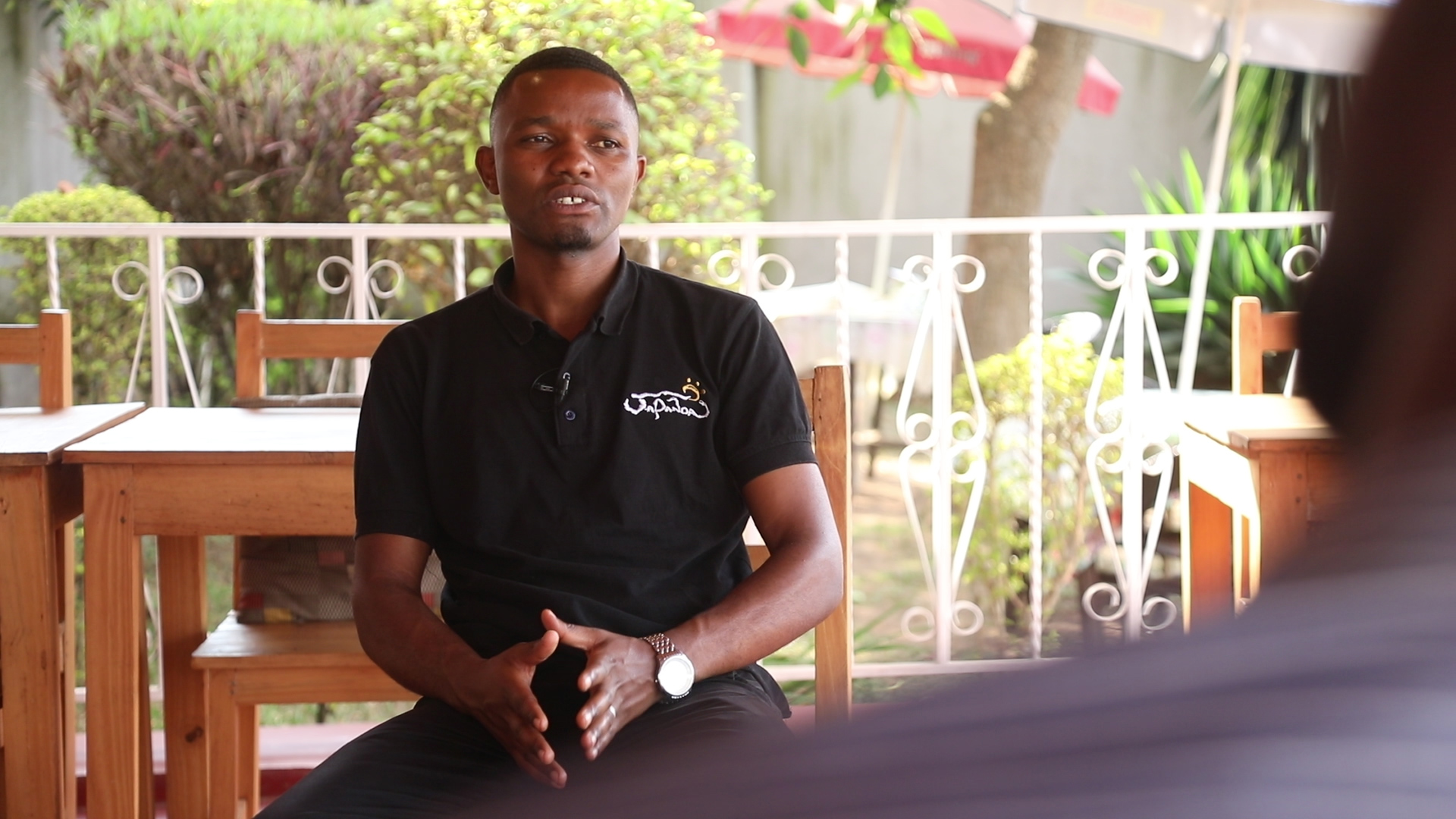
Daniel Niyogushimwa, Japanda Manager and owner
When he finished secondary school with a certificate in Maths, Biology and Chemistry (MBC), Daniel Niyogushimwa searched around in his Nyamasheke district, Western Rwanda, but he failed to secure a job.
“At that level, you don’t have a range of choices,” he says.
The young man (19 year old then) decided to board to Kigali, a trip of nearly ten hours. He was lucky enough to meet a friend whose name Claude Bayizere and this was 2016.
He introduced him to a Japanese couple that was running Japanda, a restaurant with Japanese cuisine in Kacyiru where he was working as a chef.
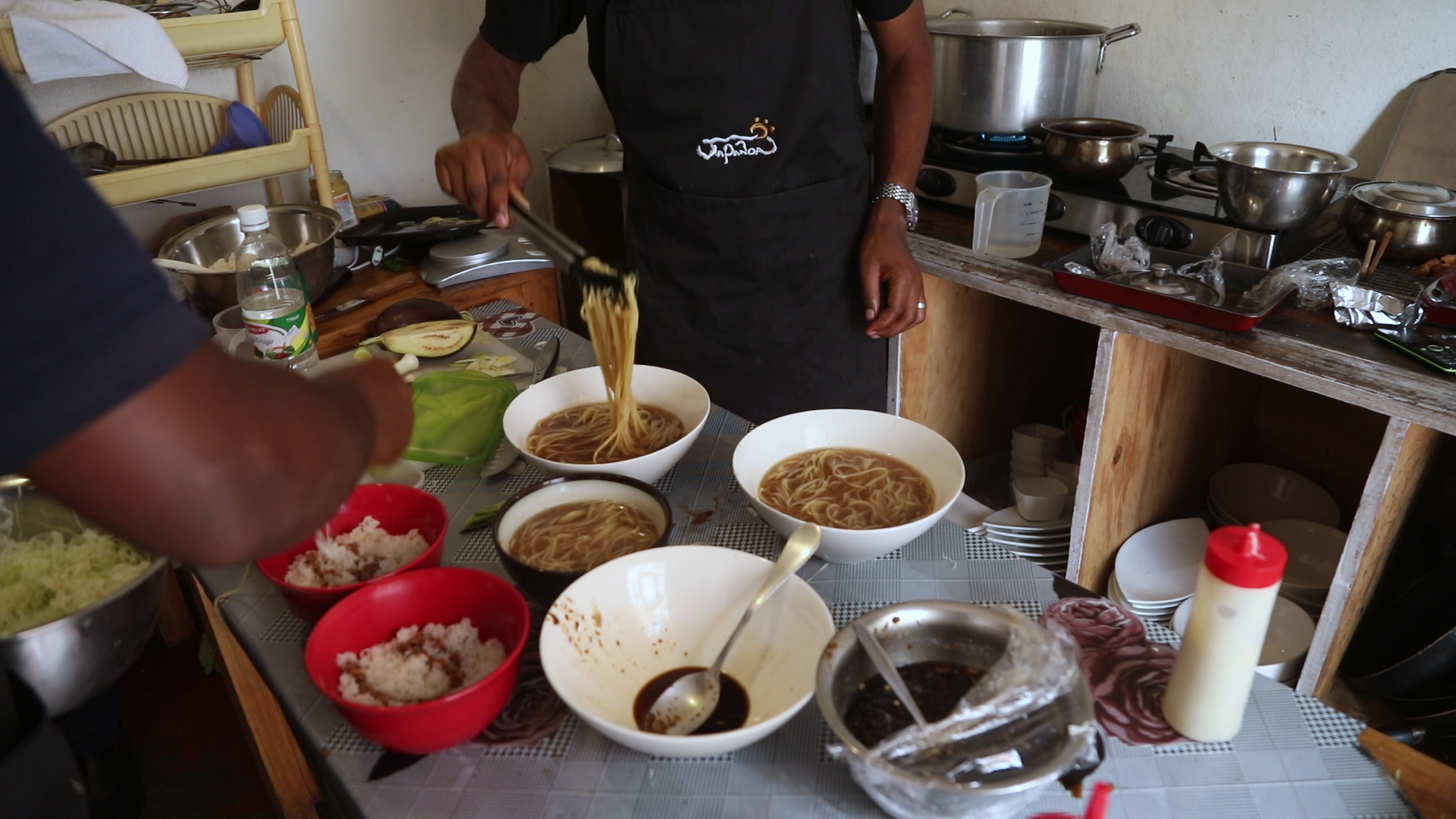
The chef prepares Ramen dish to serve clients
The family welcomed Niyogushimwa for a training and eventually a job. After one year, the Japanese family had already found the person they could entrust with their business before returning to the Far East.
“We were a couple of workers here, but when they wanted to leave, they chose to entrust the business to me. Every employer has their consideration,” he said.
The agreement was that Niyogushimwa could take the money from on-site clients and outside catering to keep the restaurant going, while the Japanese shareholder would take everything from online payments.
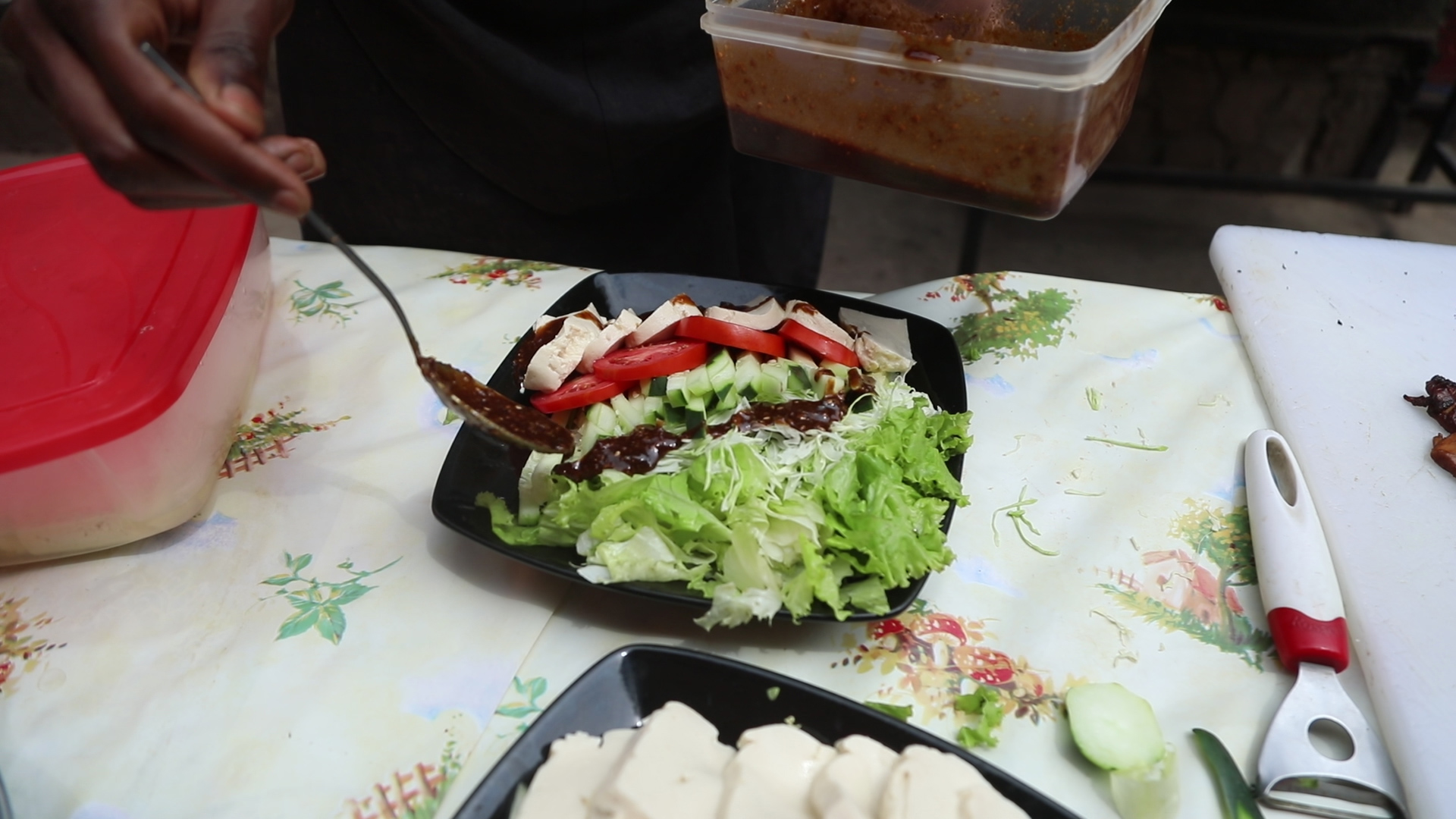
Salad is central on Japanese table
In 2018, just one year later, they renewed the agreement where Niyogushimwa took whole ownership of the restaurant.
“Our cuisine is purely from Japanese culture,” he said.
Japanese Cuisine Means Healthy Food – Niyogushimwa
According to Niyogushimwa, “Japanese cuisine offers healthy food, contrary to some fans of local tastes who might think that it includes menus that are a taboo in our culture.”
He said: “Ingredients are the same, except the way we prepare. For example, in the Japanese way, cooking oil does not come as first option.”
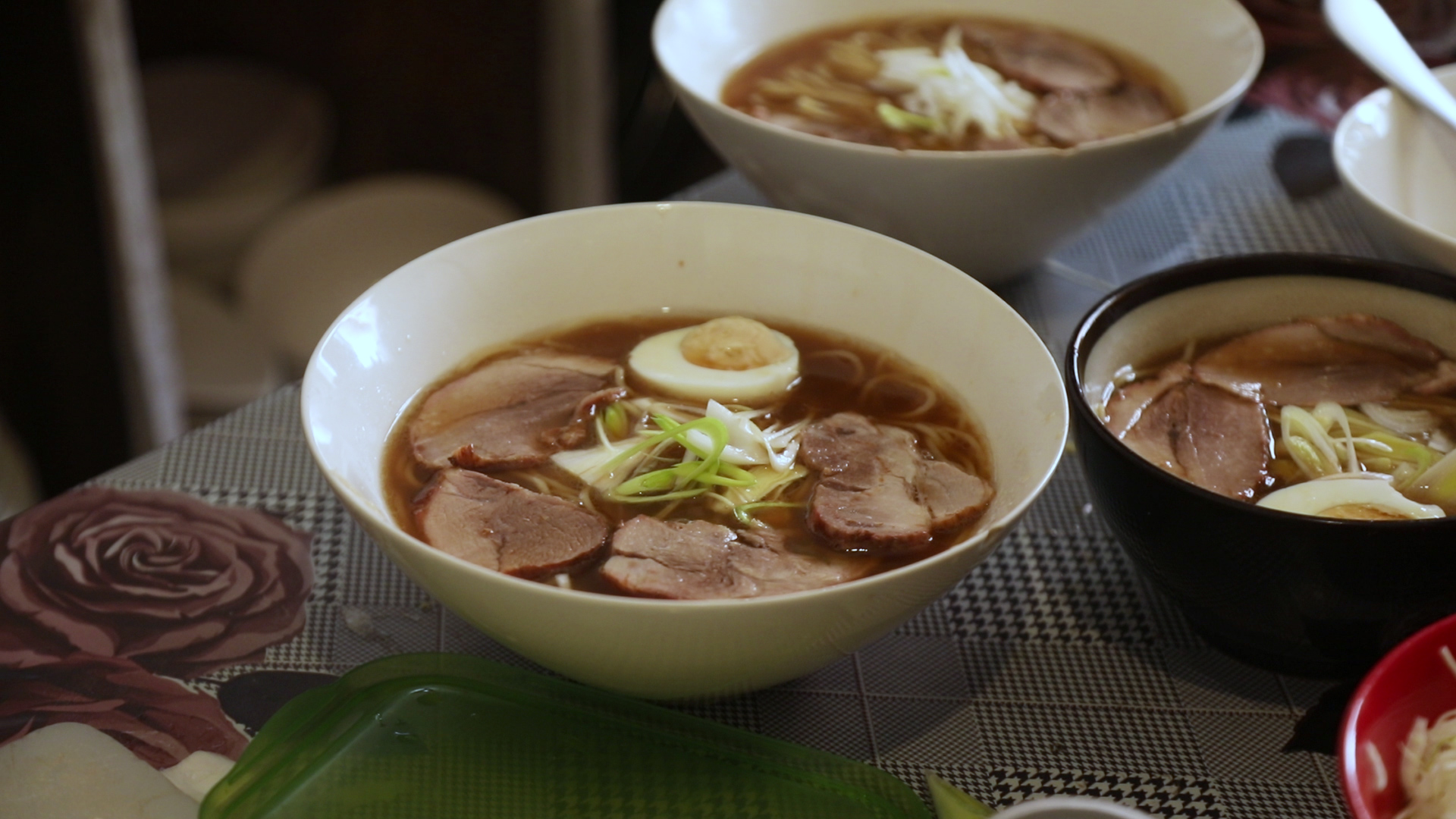
Ramen dish. Who said a sauce takes little time to prepare? You need 12 hours to have this sauce ready
One of the popular food in this cuisine is Ramen which is basically pork sauce and noodle.
“We cook this sauce for twelve hours,” says the chef.
It is served in a meat-based broth, often flavored with soy sauce or miso, and uses toppings such as sliced pork chāshū, nori (dried seaweed), menma, and scallions.
Much as nearly every region in Japan has its own variation of ramen, such as the tonkotsu (pork bone broth) ramen of Kyushu and the miso ramen of Hokkaido, Rwanda being landlocked may forcibly have one of the varieties.

Teriyaki(Front) and Ramen
Meanwhile, Mazemen is a ramen dish that is not served in a soup, but rather with a sauce (such as tare).
While pork comes with fat, in Japan it’s different; the ingredients that are prepared with any diet with pork will neutralize the fat.
Ramen offers a good opportunity to train in using chop stick, but there are no worries for those who don’t know to handle them; the chef serve Ramen with common table cutlery.
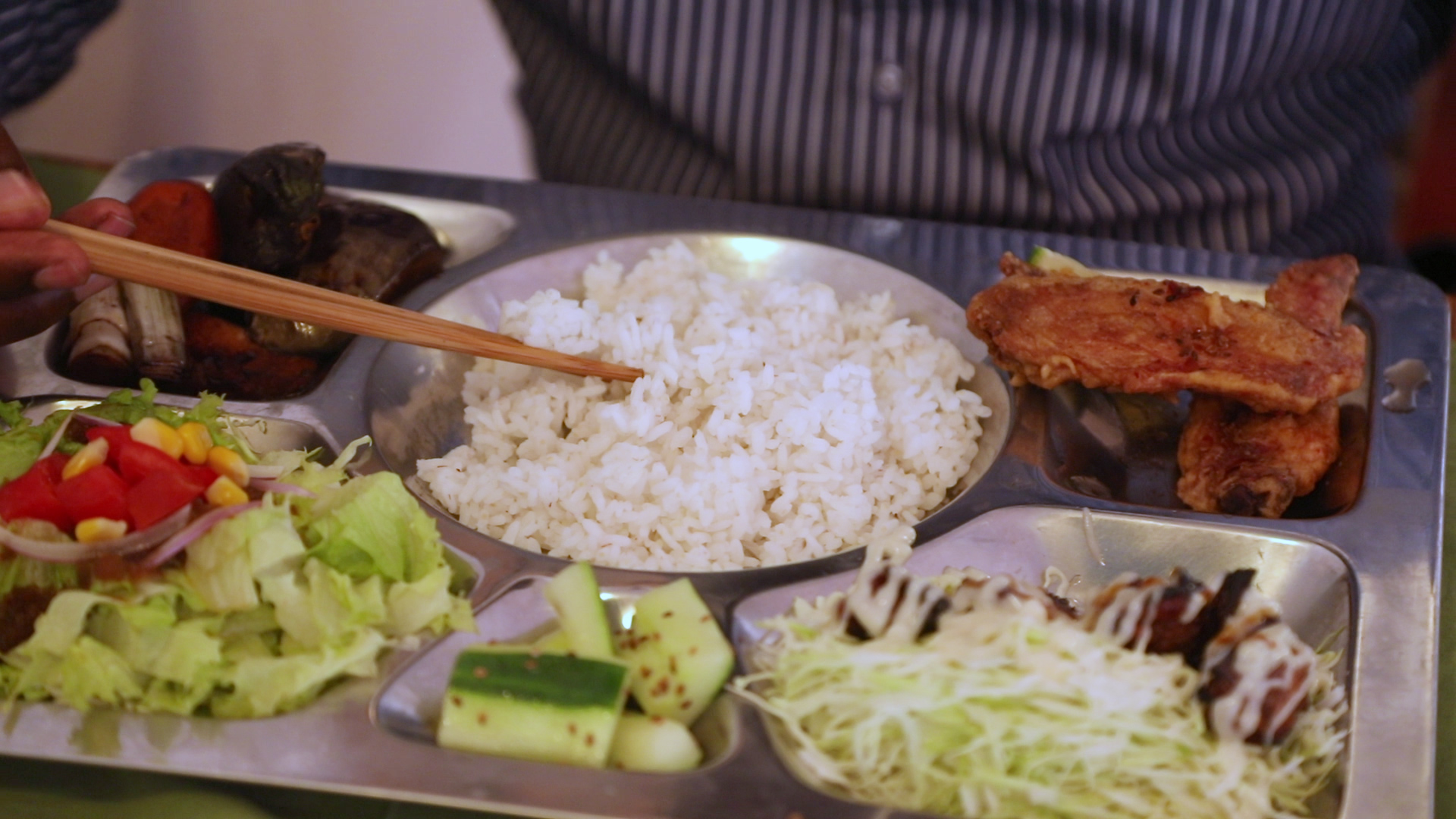
The writer enjoys Teriyaki dish, July 26
Another recipe one may not afford to miss while at a Japanese restaurant is Teriyaki barbecue chicken don.
Many will prefer to go just by the term teriyaki, despite its varieties and large number of ingredients.
At Japanda, they believe that grilled Teriyaki Chicken is the ultimate quick and easy, absolutely delicious dinner.

These clients started with Ramen for their lunch, July 26
In the cooking process, tender juicy chicken is soaked in the best Teriyaki Sauce then grilled to perfection. It is served with several popular salad here, including cabbage and cereli among other ingredients.
“In Japan, dishes include ingredients that burn the fat like ginger, the appropriate wine used in cooking, soya sauce among others.
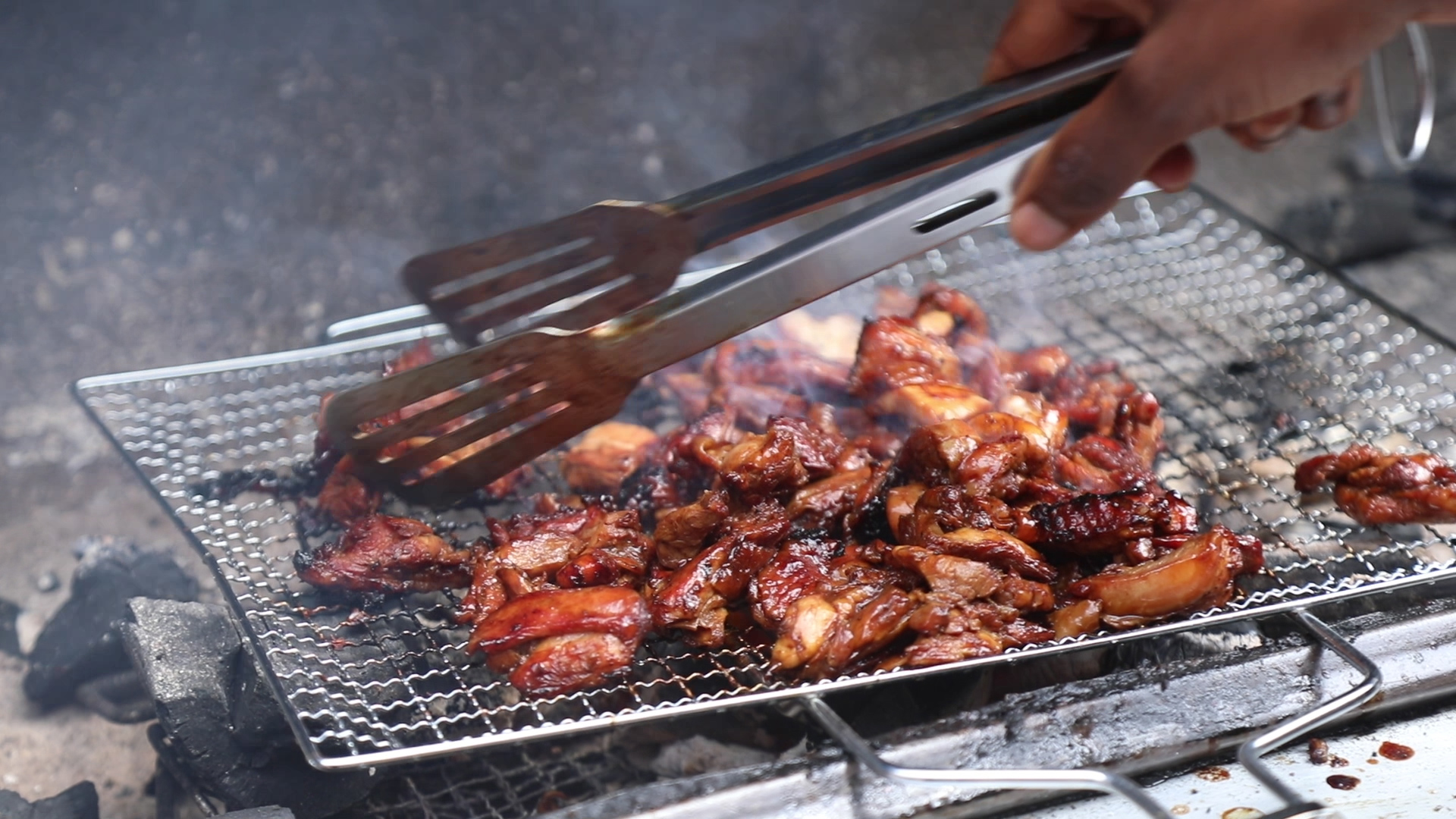
When you hear Teriyaki Barbecue Chiken, this is how the Chef starts
In fact, in Japanese meal, barbecue or Yakitori has got a central place. They are offered with salads and Japanese wine commonly known as Sake or Takashimizu made from fermented rice which is largely used in events.
When you have a distinguished guest
At Japanda, the chefs are open to share their experience on which kind of food you can prepare for a specific guest or event.
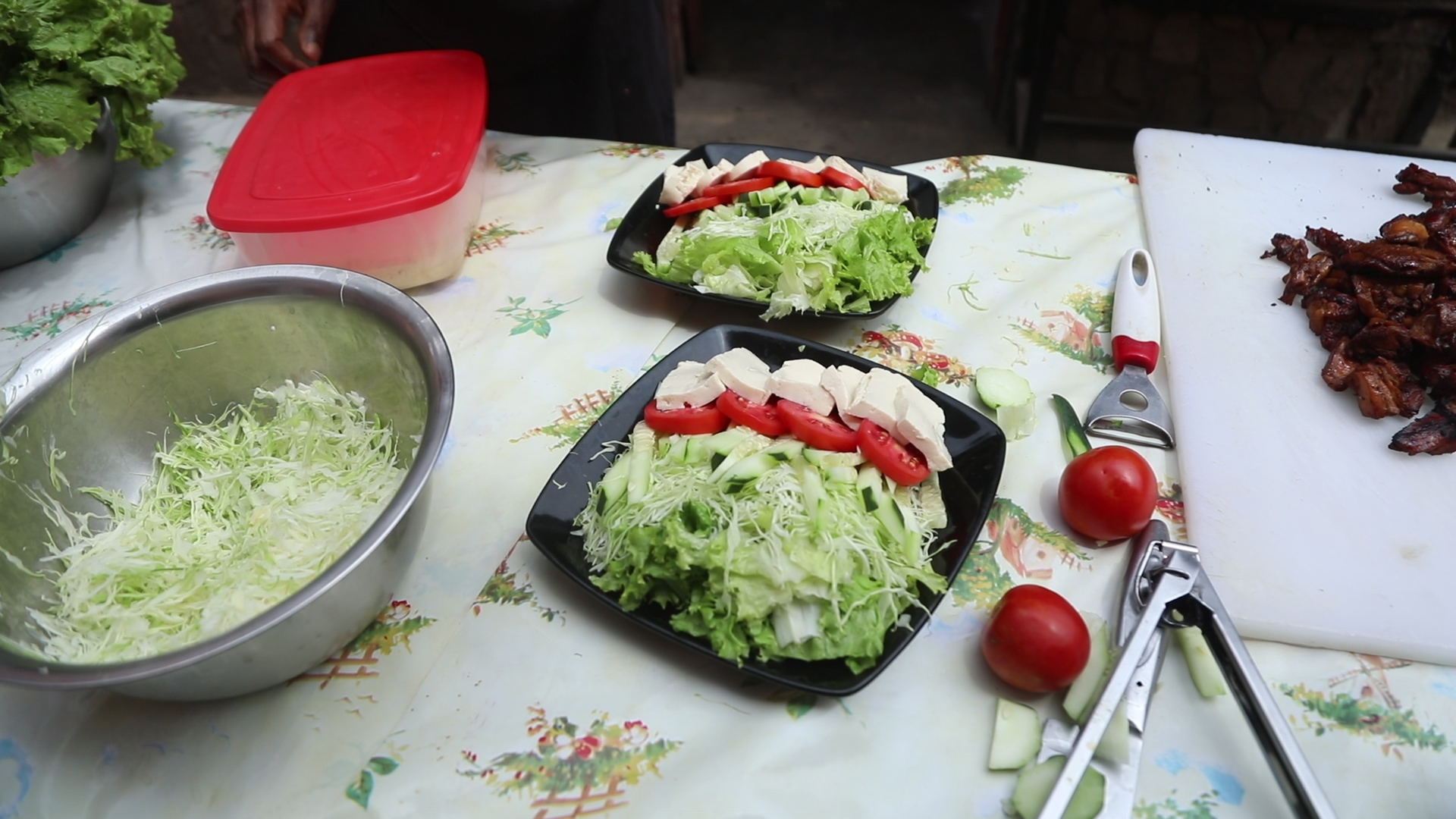
Despite not having been to Japan yet, Niyogushimwa knows that for a distinguished guest in Japanese culture, the first thing that comes into the mind of every chef is Sushi.
Sushi is a Japanese dish of prepared vinegared rice, usually with some sugar and salt, accompanied by a variety of ingredients, such as seafood, often raw, and vegetables.

Styles of sushi and its presentation vary widely, but the one key ingredient is “sushi rice”, also referred to as Shari, or Sumeshi.
“When we have such guests to the minimum we must have salad, crispy fried brown including shrimps from ocean and tofu,” he said.
When the current Japanda manger joined, the company was one year old and it was useful to him as individual, but the restaurant is now very important to his family at large and a team of workers and their families.
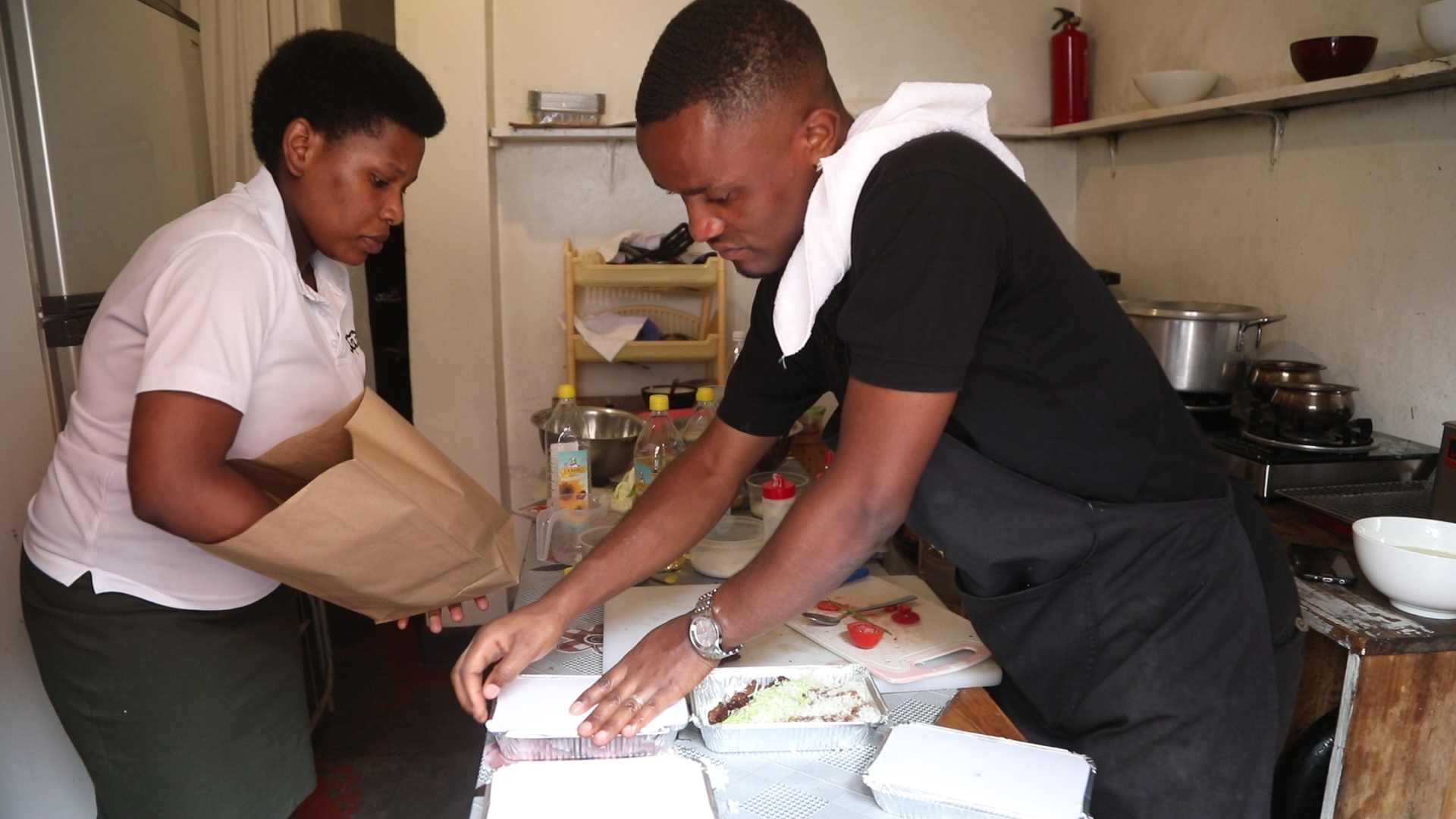
Niyogushimwa and wife prepare takeaway food for their clients
Most fortunately, he reunited with Dukundane Alice, a former worker who left for a while for university. They got married with now one baby girl.
“It’s one of the most important achievements from Japanda. Moreover, I have got six certificates from different trainings in management, service, cuisine…which is important for my life,” he said.
On July 27, Niyogushimwa was approved Ambassador of Japanese Cuisine in Rwanda.



